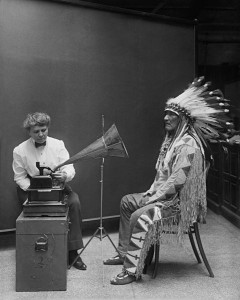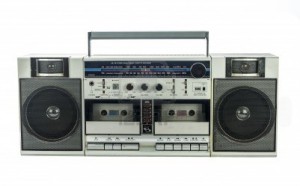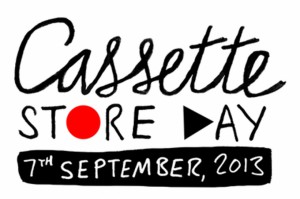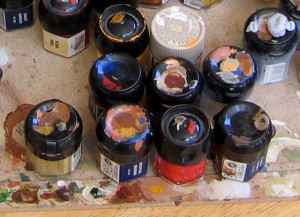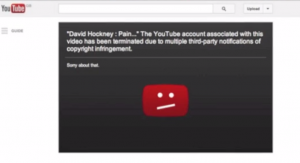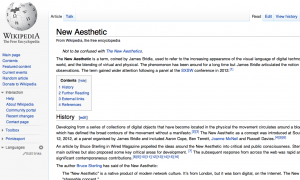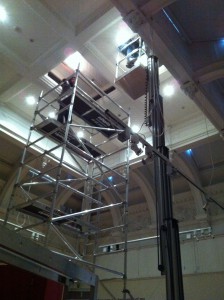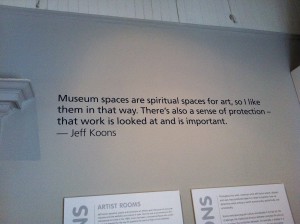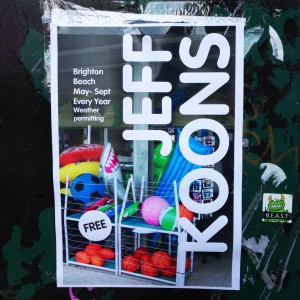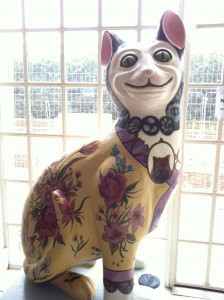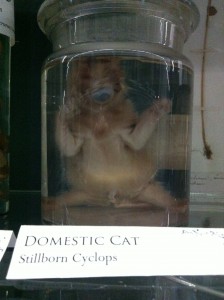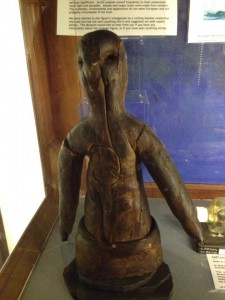
My third Pecha Kucha talk was given (as were both previous ones) for the Brighton Digital Festival edition of PKN Brighton. I love the format but this time it ran away from me…
I fell behind the slides and lost key points as I rushed to keep up. Under-prepared, basically. Also, previously I did extended jokes but this time I had at least a semi-serious (quite complex) point to make, though still presented in an oblique fashion. Anyway, it was too much to juggle but I don’t feel bad about it – falling apart (or not) is half the point of Pecha Kucha talks. It’s HERE if you want to check it out but I’d rather you read this version.
What follows is a rough transcript (not exactly what I said but the gist) and photos, with a couple of clarifying additions in italics…
THE POO AESTHETIC: Let’s Get Over The Word ‘Digital’
I’ll start with Seb Delisle’s digital fireworks. At last year’s Brighton Digital Festival, outside the Jubilee Library. They’re fun – you smack the bottom and the fireworks explode upwards. Kids love them. I was troubled that it was called ‘art’ – not because it’s not ‘good enough’ to be defined as such but because the word ‘art’ seems to dirty up a fun toy.
This is Titian, looking aghast at the digital fireworks, Tiziano Vecelli, one of the greatest artists of all time. They quoted the ending of Dante’s Paradiso about him, calling him ‘The Sun Amidst Small Stars’. Probably born in 1490 but funnily enough, as an old man Titian wrote to the King Of Spain saying that he was born on September 16, 1474 which is exactly 500 years ago to the day that I was born – although that doesn’t matter like I want it to, since he was lying. We don’t know why.
The filmmaker Adam Curtis makes blogs for the BBC and some extraordinary documentaries about how horrible everything is and how stupid we all are. His series All Watched Over By Machines Of Loving Grace was partly about that dead scumbag Ayn Rand but fewer people know it was named for a beautiful poem by Richard Brautigan.
Once I was lucky enough to meet Haruki Murakami and I accused him – in a polite way – of stealing a scene (in which the hero makes pasta) from a passage in a Brautigan story and he admitted it. I was so chuffed.
This is what audio recording was like at first. Frances Densmore records Blackfoot chief Mountain Chief on a cylinder phonograph for the Bureau of American Ethnology in 1916. So his name is Chief and his job is Chief. Technically he’s Chief Chief, like Major Major in Joseph Heller’s war novel Catch 22.
This is a ghetto blaster / or a boombox, now relentlessly retro iconic. When I was eleven this was my sole desire, so I saved up my pocket money to raise £49.99 to buy a small black plastic one. The most important feature was the double cassette deck, so you could tape-to-tape your own compilations, as well as recording Bruno Brookes doing the Top 40 chart on Radio 1.
Somewhere being passed around is a list of the Top 10 songs of 1985, * have a look at those, they’re phenomenal and they’ll make you think.
MUSIC IS THE CANARY
Music is the canary. Music went digital first. CDs were born in the 1980s, heralded in the science page of Eagle comic for boys. I read Eagle and my sister read Bunty, then we swapped. My first crush was one of the Four Marys.
A key point about the music biz having already experienced dramatic changes (away from a mass market of physical objects) is that we can see from the other side how impossible it is to empathise with that paradigm shift in either direction. Before the MP3 player it was near-impossible to imagine our world as it is now, in any realistic sense. And now, it’s equally near-impossible to remember (or rather imagine) what it was like before. Even seeing clearly ‘factually’ what is coming, one cannot emotionally empathise with or ‘understand’ impending change. Which is why it is such a powerful coming storm.
The internal audio signal from BBC Radio 1 also went digital in the 80s, which people don’t remember, years and years before the appearance of these DAB domestic radios. It’s funny that they deliberately designed them to hark back to 1930s or 1950s ‘wireless’ styling, to make them feel more welcoming. In 1989-1990 when I made my first demos, already we were outputting our mixed recordings onto DIGITAL AUDIO TAPE, itself now obselete but still one of the first widely used digital formats for anything.
And nowadays, alongside Record Store Day celebrating vinyl – which is currently a growing, rather than a shrinking medium – we have Cassette Store Day, as it rapidly becomes a cool thing among music artists to sell your music on cassette, like we used to first time round but ironically. Obviously it costs a lot more; when it was a mainstream format it was nice and cheap, now it’s an art format it costs loads.
Pigmentation has always been a technology and industry in and of itself. Tech always informs art in a ‘toolkit’ role. One point I miss here is that this process is continuous, ongoing, so to pick up one specific set of technological filterings, such as the growth of coding and Internet languages or protocol and define these as a predominant (or even constantly present) aesthetic is I believe a simple error. But we’ll get to that, in a vague way…
In the early 80s the BBC made a TV series with famous artists trying to paint on Quantel Paintbox. The best known of these was David Hockney, who I personally find to be a shit artist. It was funny at the time but 30 years later he’s doing it all over the place now that the tech has caught up with his vision, painting on the iPad and such.
I wanted to share this old programme but you can’t really play a YouTube clip in a Pecha Kucha talk, it breaks the rules. And anyway, when I tried to find the clip of his BBC show, they’d taken it down. Also when you go to Hockney’s website you actually have to agree to his copyright terms in order to enter the site. Somewhere in the world right now, people are having a violent debate about whether that’s conceptually a clever or stupid move. Probably on Twitter.
This is the Wikipedia entry for the New Aesthetic, a ‘movement’ (built around the term coined by James Bridle) closely associated with Brighton Digital Festival. I’ll admit that I messed with this page just before I left the house.
Wikipedia summarises the New Aesthetic as “an increase in the references and use of language from one world – the internet and digital communication business – into the mainstream world.” I would probably argue that there are only two real sections (genres) of culture that are truly doing this today, to any significant or potent extent, across all of mainstream culture: pornography and reality television.
When Bruce Sterling describes the new aesthetic as “diffuse, crowdsourcy, made of many small pieces loosely joined, like its logo a bright cluster of balloons tied to some huge, dark and lethal weight,” it makes me think of the super-heavy Jeff Koons concrete caterpillar hanging upstairs in Brighton Museum. To hang that Jeff Koons piece, Brighton Museum had to strengthen the ceiling joists.
This photo wasn’t in the Pecha Kucha slideshow but I want to show you the team strengthening the ceiling upstairs at Brighton Museum, preparing for Jeff Koons’ concrete caterpillar.
The reason it’s here is because it’s a fantastic coup for Brighton to have an exhibition – even a small one – of Jeff Koons in the city, especally for FREE. Almost everyone thinks it’s very important that it’s here. Almost no-one thinks it’s any good.
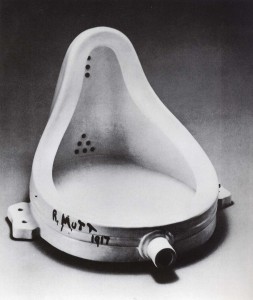
Art people know there’s almost no need for Jeff Koons or Damien Hirst because of Marcel Duchamp. In the same way, there’s really no need for Pink Floyd, once you’ve heard The Beatles’ ‘I Want You (She’s So Heavy)’.
“Museum spaces are spiritual spaces for art, so I like them in that way. There’s also a sense of protection – that work is looked at and is important.” – Jeff Koons
This quote was also displayed in Brighton Museum, as part of the Koons exhibition. I look at it and wonder at the magnificence of its meaninglessness. This quote is the only photo I was allowed to take, inside the Jeff Koons exhibition. I was accompanied by the exhibition security guards, to make sure I didn’t share any photographs of the actual art.
This is not a poster advertising the Jeff Koons exhibition at Brighton Museum, it’s a piece of street art commenting on it, mocking it, rather than promoting it. I really like that, that’s very Brighton isn’t it: to take the piss out of a free exhibition that’s shit but we know we need to have.
“That we find a crystal or a poppy beautiful means that we are less alone, that we are more deeply inserted into existence than the course of a single life would lead us to believe” – John Berger
Here’s a quote I found powerfully meaningful, in a pithy way very thought-provoking, from John Berger. This quote is printed in the Vault area of the Mineral Gallery, in the Natural History Museum, the posh bit, so he’s talking about rocks – and they don’t give a shit if you photograph things, it’s fine. I love it.
TWO CATS
These are two different cats on display in different Brighton Museums:
The big papier-mache cat on the left may be familiar to you as the mascot of Brighton Museum and lives in the shop. It’s based on a much smaller real (pottery) exhibit inside. The cat on the right is on display in the Booth Museum up on Dyke Road. It’s pretty gross, so I thought I’d show it to you.
So, these two cats in two other forms:
Cat #1 Here’s the oculus rift, which is about as trendy a digital arts tool as I could think of. It was built with crowdfunded money and enables vivid 3d when playing games. Or ‘gaming’ as ‘gamers’ call it.
In December 2000, there were 15 digital cinema screens in North America and 11 in Western Europe. At last year’s Brighton Digital Festival, 12 years later, a showing of Princess Mononoke was proudly advertised as being on 35mm – because they’re already so rare, it’s worth flagging them up. I remember seeing the first ever all-digital screening in Leicester Square Cinema – of Shrek. That was my first digital cinema experience. I wonder if, a decade later, Princess Mononoke was my last ever analogue cinema experience. The crucial word in the phrase ‘new aesthetic’ is ‘new’ and when change happens this exponentially; constantly accelerating, doesn’t the word ‘new’ have almost no power? So in this context a ‘new aesthetic’ can only work while (for example) both analogue film screenings and digital film screenings co-exist in the mass market? And oops, that’s gone… Christopher Nolan aside.
Cat #2 Here’s something amazing from from Whitby Museum. My friend Joel Morris took this photograph. Whitby actually has two amazing museums because there’s also the Museum of Victorian Science, which is fabulous.
This thing is made of wood and covered in real skin and is from the Arctic Circle, and has probably been in the Whitby Museum Collection since 1823 but no-one knows what he is. Recently an Alaskan expert in artefacts visited the museum to identify him – but couldn’t and told the curators he didn’t have the faintest idea what he is.
So to conclude: in arts terms The New Aesthetic is a big papier maché cat version of something else that’s already in the room, The Poo Aesthetic is where the fun is.
Density + reference-filled linguistics ≠ meaning.
You’re going to miss out on the Thing in Whitby Museum that no-one understands – and the cyclops stillborn cat in the Booth Museum, if you’re at home dicking about on your Oculus Rift. Likely both museums will be shut down because someone gave all the public arts money to web developers – while museums had to close, when they couldn’t afford to redevelop and rebrand to showcase a digital strategy.
Here’s the original, even messier version of The Poo Aesthetic on Vimeo courtesy PKN Brighton.
* the top 10 selling UK singles of 1985:
10. King – Love & Pride
9. A-ha – Take On Me
8. Feargal Sharkey – A Good Heart
7. Phyllis Nelson – Move Closer
6. Mick Jagger & David Bowie – Dancing In The Street
5. Sister Sledge – Frankie
4. Paul Hardcastle – 19
3. Madonna – Into The Groove
2. Elaine Paige & Barbara Dixon – I Know Him So Well
1. Jennifer Rush – The Power Of Love




